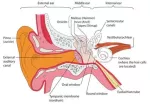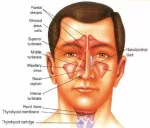
The vestibular system includes the parts of the inner ear and brain that process the sensory information involved with controlling balance and eye movements. If disease or injury damages these processing areas, vestibular disorders can result. Vestibular disorders can also result from or be worsened by genetic or environmental conditions, or occur for unknown reasons.
The most commonly diagnosed vestibular disorders include benign paroxysmal positional vertigo (BPPV), labyrinthitis and vestibular neuritis, Ménière’s disease, secondary endolymphatic hydrops, and perilymph fistula. Vestibular disorders also include superior canal dehiscence, acoustic neuroma, ototoxicity, enlarged vestibular aqueduct syndrome, and mal de débarquement. Other problems related to vestibular dysfunction include vestibular migraine and complications from autoimmune disorders and allergies.
Because of difficulties posed by accurately diagnosing and reporting vestibular disorders, statistics estimating how common they are, how often they occur, and what social impacts they have range widely. Yet even the lowest estimates reflect the fact that vestibular disorders occur frequently and can affect people of any age.
One recent large epidemiological study estimates that as many as 35% of adults aged 40 years or older in the United States—approximately 69 million Americans—have experienced some form of vestibular dysfunction. According to the National Institute on Deafness and Other Communication Disorders (NIDCD), a further 4% (8 million) of American adults report a chronic problem with balance, while an additional 1.1% (2.4 million) report a chronic problem with dizziness alone. Eighty percent of people aged 65 years and older have experienced dizziness, and BPPV, the most common vestibular disorder, is the cause of approximately 50% of dizziness in older people. Overall, vertigo from a vestibular problem accounts for a third of all dizziness and vertigo symptoms reported to health care professionals.
Symptoms of chronic dizziness or imbalance can have a significant impact on the ability of a disabled person to perform one or more activities of daily living such as bathing, dressing, or simply getting around inside the home, affecting 11.5% of adults with chronic dizziness and 33.4% of adults with chronic imbalance. The painful economic and social impacts of dizziness are significantly underestimated.
Vestibular disorders not only profoundly affect adults, but also children. Once thought to be exceptionally rare, pediatric vestibular disorders are receiving increasing attention from clinicians as an overlooked problem. In addition to impairments of motor development and balance, vestibular deficits may cause poor gaze stability that inhibits children from learning to read. Despite new awareness of pediatric vestibular disorders, children are currently not typically screened for them, and as a result frequently fail to receive medical treatment.










